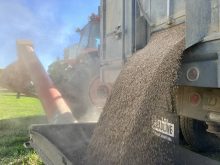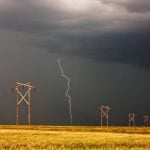Growers in all three Prairie provinces are very likely to be finished seeding this week.
Saskatchewan wrapped up its spring planting by June 9, while Manitoba reported it’s 99 per cent complete for the week ended June 10 and Alberta was also at 99 per cent as of June 3. In the entire region, seeding is on track to be completed ahead of schedule and the sowing of canola is almost done.
However, the benefits of seeding crops weeks early, allowing them more time to grow, may be cancelled out by another dry summer.
Read Also

Manitoba canola embattled by verticillium
Verticillium stripe pressure has been growing in Manitoba, and canola farmers still have precious few tools to protect their crop from the disease.
Environment and Climate Change Canada said most Prairie growing areas reported at least 10 millimetres below average precipitation from May 10 to June 9. Deficits of more than 50 mm were reported in parts of southern Alberta, southwest Saskatchewan and southeastern Manitoba. Only southeastern Saskatchewan and southwestern Manitoba received greater-than-average rainfall. Mean temperatures in major Prairie cities ranged between 1 C and 2.8 C above their historical averages in May, while all but one city received less rainfall.
The Canadian Drought Monitor said 72 per cent of growing areas in the Prairie provinces were either abnormally dry or in some degree of drought as of May 31. In Environment and Climate Change Canada’s recently released summer forecast, it anticipates above-normal temperatures in the southern Prairies and less rain in the region’s western side.
Farmers looking for higher canola yields to refill their near-empty bins come harvest could be out of luck, but the summer forecast is lifting new crop prices.
The November canola contract has gained more than $100 per tonne since the start of April and has largely been above its moving averages. After a handful of attempts, it broke through $700/tonne on June 12. The March contract surpassed its $720 level also on June 12 with the January contract following the next day. Sharply rising Middle East tensions sending crude oil higher, combined with likely biofuel policy changes in the U.S. were adding to the increases in canola futures.
A stretch of rainfall would pressure prices as it did recently for spring wheat on the Prairies and the United States Northern Plains. China’s tariffs on canola oil and a stronger Canadian dollar would also pull prices back.
If conditions persist, $700/tonne or more for canola could be a familiar sight in the coming months.
















